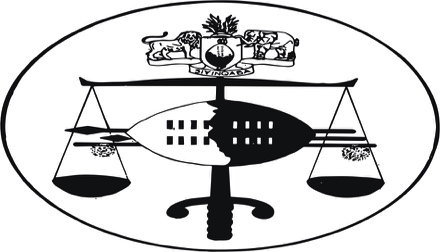IN THE INDUSTRIAL COURT OF SWAZILAND
JUDGMENT
Case No. 171/2015
In the matter between:
JOHN BHEMBE Applicant
And
PALFRIDGE LIMITED Respondent
Neutral citation: John Bhembe v Palfridge Limited (171/2015) [2021] SZIC 03/2021 (11 February 2021)
Coram: S. NSIBANDE J.P.
(Sitting with M.P. Dlamini and E.L.B.Dlamini
Nominated Members of the Court)
Date Heard: 28 January 2021
Date Delivered: 11 February 2021
JUDGMENT
[1] This is an application for the determination of an unresolved dispute brought by the applicant, an adult male Swazi of Matsapha, in the Manzini Region. The applicant is a former employee of the respondent, Palfridge Limited, a company duly registered in terms of the company laws of the Kingdom of Eswatini and having its principal place of business at Matsapha Industrial Sites, in the Manzini Region.
[2] The applicant was employed by the respondent on the 1st October 2001 as a machine operator and was in the continuous employ of the respondent until 11th September 2007 when he was dismissed, following a disciplinary hearing.
[3] The Respondent opposed the application for the determination of an unresolved dispute and in its reply raised a point of law. The point in limine was that the applicant’s claim had prescribed due to the unreasonable and inordinate delay in filing the application. The respondent accordingly asked the court to dismiss the application.
[4] It is common cause that the applicant was dismissed on 11th September 2007. It is not clear when the report of dispute was made to the Conciliation Mediation and Arbitration Commission (CMAC) but a certificate of unresolved dispute was issued by CMAC on 22nd October 2008, a year and one month after the applicant’s dismissal.
[5] It is common cause that the application for the determination of an unresolved dispute was launched in this court on the 29th April 2015 some six years, six months after the issuance of the certificate of unresolved dispute by the CMAC.
[6] The respondent, in motivating its point of law, submitted that the court ought to draw an adverse inference against the applicant, firstly on the basis of his failure to replicate, after the respondent filed its reply. It was submitted that the replication would have enabled the applicant to respond to the point raised and give an explanation of his almost seven year wait. Secondly, on the basis that there has been no application for condonation of the unreasonable delay in instituting the proceedings made by the applicant despite that the point was raised some five (5) years ago. Mr. Motsa for the respondent submitted that in the absence of an explanation for the unreasonable and inordinate delay, the point in limine should be upheld and the application dismissed.
[7] Respondent further submitted that the Industrial Court of Appeal, in the matter of Usuthu Pulp Company (Pty) Ltd v Jacob Seyama and 4 Others, ICA Case No. 01/2004 settled the position of the law in so far as the point raised is concerned; that the court having taken into account the lack of legislation dealing with prescription in labour disputes and having aligned itself with the principle that by their very nature labour disputes must be resolved expeditiously, concluded that labour disputes must be brought to the attention of the authorities and the Industrial court without undue delay and that a period of three years is a fair period within which to bring such disputes to the attention of the authorities and the Court.
[8] The applicant did not dispute the seven year delay. He acknowledged and accepted the Industrial Court of Appeal’s decision in the Usuthu Pulp Company (Pty) Ltd v Jacob Seyama and 4 Others supra. Mr. Simelane submitted on his behalf that in light of the fact that there was no legislation governing prescription of claims it was discriminatory to limit labour claims to three years when other claims took thirty years to prescribe in terms of the common law. It was submitted that that position went against Section 20 of The Constitution of Eswatini Act that calls for equality before the law. In terms of Section 20 “All persons are equal before the law in all spheres of political economic, social and cultural life and in every other respect and shall enjoy protection of the law.”
[9] Mr Motsa for the respondent submitted that this may well be a matter to be referred to the High Court in terms of the constitution Section 35(3) of the Constitution provides that “if in ay proceedings in any Court subordinate to the High Court any question arises as to the contravention of any provisions of this chapter, the person presiding in that Court may and shall where a party to the proceedings so requests, stay the proceedings and refer the question to the High Court, unless in the judgement of that person, which shall be final, the raising of the question is merely frivolous or vexations.
[10] We have considered the submissions of the parties and the relevant sections of the constitution. Our duty is to consider whether the raising of the question is merely frivolous or vexations. Our view on the correctness or otherwise of the submissions are neither here nor there. Once we consider that the question is neither frivolous nor vexations we are bound to refer it to the High Court. Having considered the submission, we find that the applicant’s submissions were neither frivolous nor vexations and the question of the alleged infringement of his Sections 20 rights must be referred to the High Court in terms of Section 35(3) of the Constitution of Eswatini.
[11] Consequently, the matter is stayed founding the determination of the question whether applicant’s rights to equality before the law is infringed.
The Members Agree.
 For Applicant : Mr L.M. Simelane
For Applicant : Mr L.M. Simelane
(L.M. Simelane & Associates)
For Respondent : Mr. M. Motsa
(Musa Motsa Attorneys)
7
